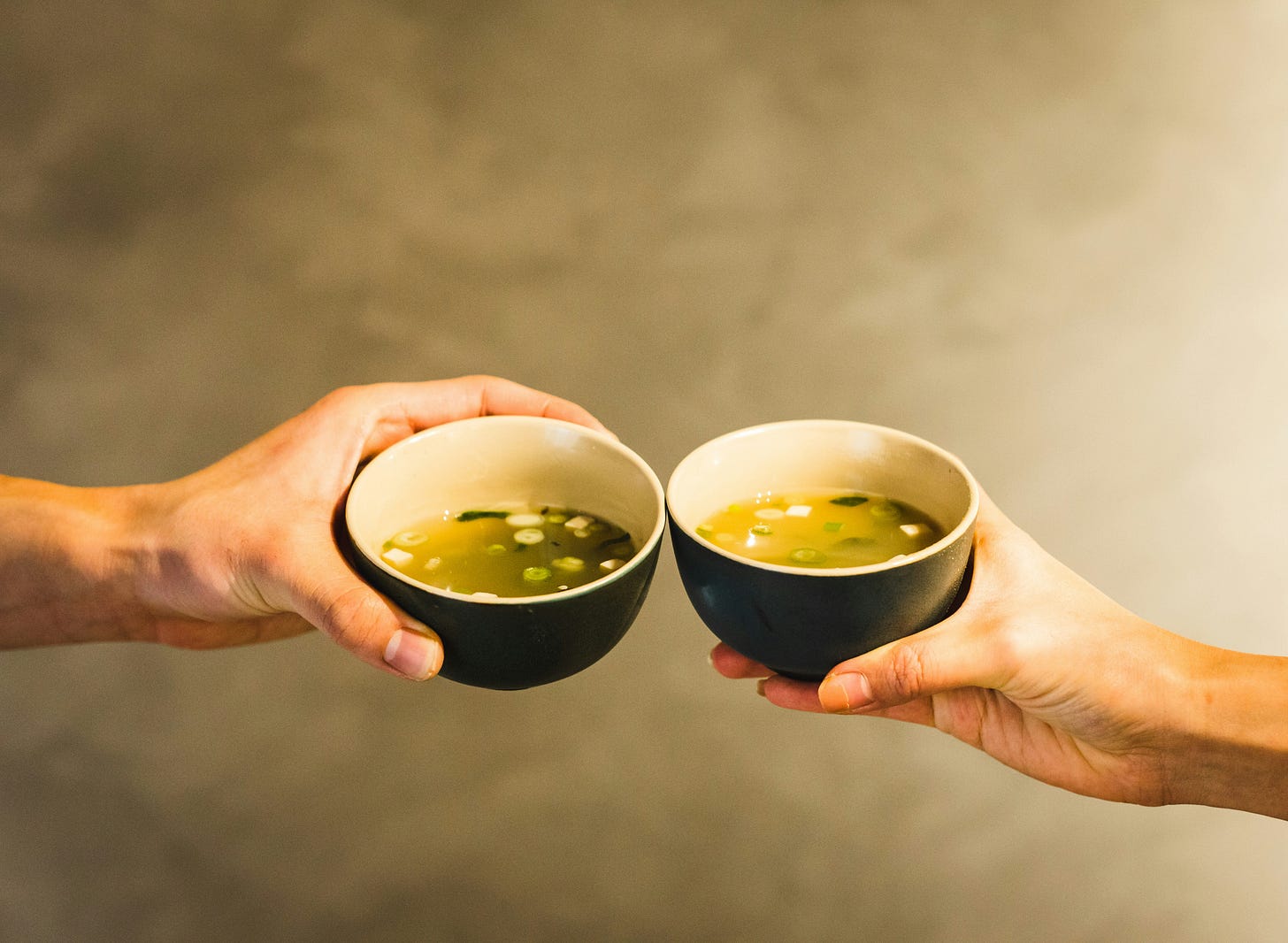Comfort Food: Beef Picadillo Soup
My mother and mother-in-law's version of this recipe are similar, so the act of cooking this is special to me. I helps me connect with them and heals me—and my mother wound.
Comfort Food follows the most practical part of my magic practice—recipes. Here’s what keeps my household healthy.
Recipe first! You’ll need a pot that can hold more than 6 cups of liquid. This recipe makes four large portions or more if served with rice. Ingredients:
1/2 tbsp olive oil
1/2 medium onion, diced
1/4 tsp kosher salt
4 cloves of garlic, minced or crushed
225g ground beef
1 1/2 tbsp fish sauce
180g or 1 1/2 cups tomatoes, diced (3 Roma tomatoes)
2 bay leaves
3 cups beef broth
3 cups water
170g or 3/4 cup potatoes, diced (4 baby potatoes or 1 russet potato)
1/4 tsp freshly ground black pepper
I know the photo above isn’t beef picadillo soup! Just needed something to break up the text. Pagbigyan. Directions:
If serving with rice, make the rice first. Then, add olive oil to a pot on medium heat. Add onion and salt and sweat for 5 minutes. Add garlic and stir a few times.
Add beef and brown for 5 minutes. Add fish sauce and stir a few times.
Add tomatoes and cook until soft, for 5 minutes. Add bay leaves.
Add water and broth and bring to a boil. Turn to low heat, cover, and simmer for 30 minutes.
Add potatoes and pepper and turn to medium heat. Cover and simmer for 15 minutes.
The Mandela Effect and Beef Picadillo Soup
I’ve always been intrigued by the Mandela effect but didn’t have any actual instances of it in my life, until I started searching for this recipe online. In the house where I grew up, we called the recipe “beef picadillo,” and it was just understood that it was a soup. But according to Kuya Vanjo and Ate Lalaine, most Filipinos think of another recipe—sort of like arroz ala cubana or an empanada filling—when they hear those words. While I’m quick to call it evidence of the Mandela effect, I get the confusion. “Picadillo” means a stew of meat and vegetables that is commonly used as a filling or served with rice.
Imagine my surprise when my mother-in-law visited a few years ago and made beef picadillo the way my mom made it—and called it the same thing. Right now, it seems like my family and my husband’s family are the only people who know this recipe and grew up with it. Chalking this up to my mother and mother-in-law attending the same university in the 1960s, but it is an interesting coincidence.
The Importance of a Nostalgic Soup
I never made this soup on my own in the Philippines. The last time my mother-in-law visited, I told her how much this dish meant to me and asked her to make a big batch before she left. She did—and I savored that batch for a few weeks while I learned to how make it myself. My version is half what I remember from childhood and half what I observed when my mother-in-law was here.
When I have this soup, I remember quiet nights in Cubao during the rainy season. My mom, grandmother, or Ate Josie would make a huge batch of beef picadillo or miswa with patola whenever I wasn’t feeling well. It is a memory associated with my mother showing me how much she loves me. I associate the taste with feeling better, so it becomes a magic spell for healing due to nostalgia. This 2024, It’s gotten me and my husband through some dental treatment post-care periods.
Let Me Know If You Try My Recipe!
Look, I know the culinary arts aren’t my lane. But I am sticking to the idea that developing my version of recipes that I love to make is magic. Some witches share spells—I share recipes. Hope this soup helps you feel better.
Photo by Louis Hansel on Unsplash
If you’ve enjoyed reading this or something else I’ve written, please consider buying me a coffee. ☕ Thank you!





